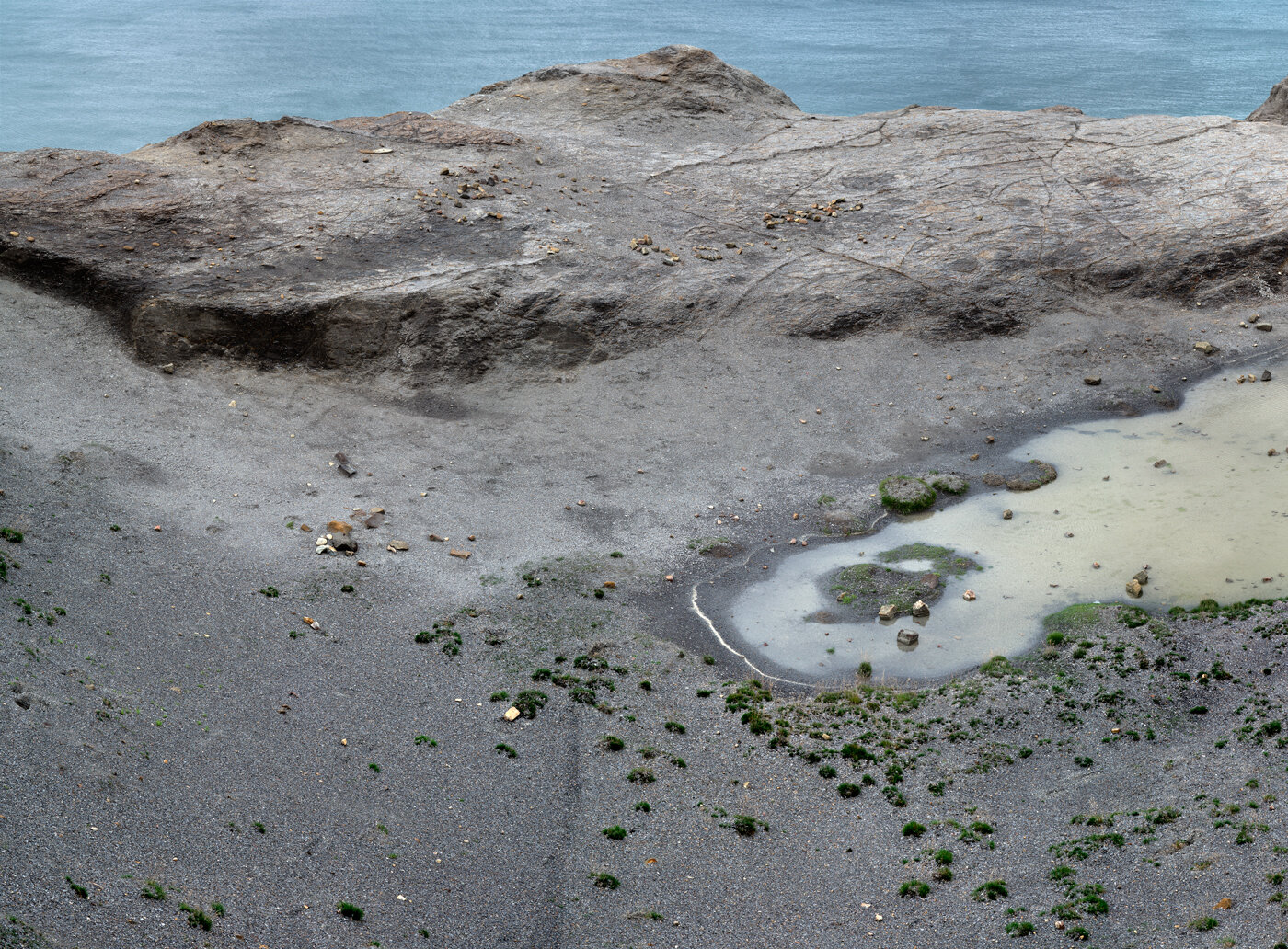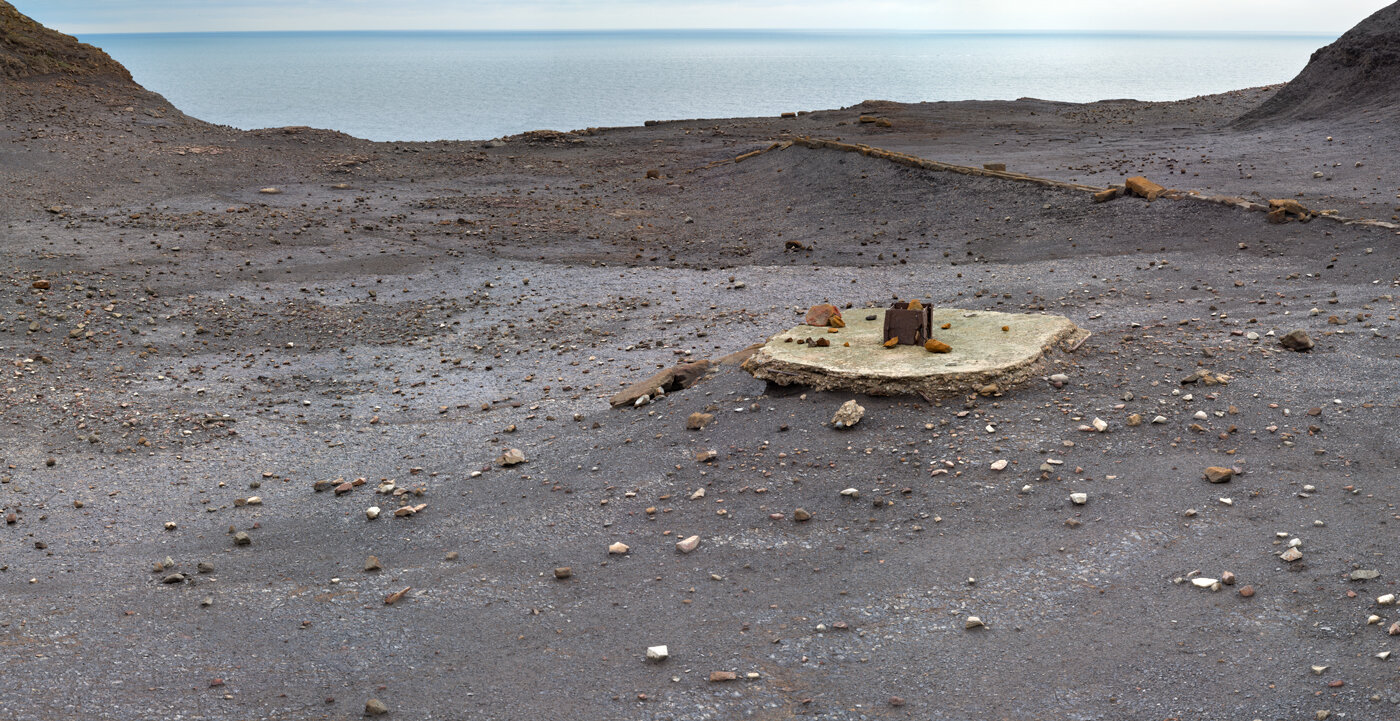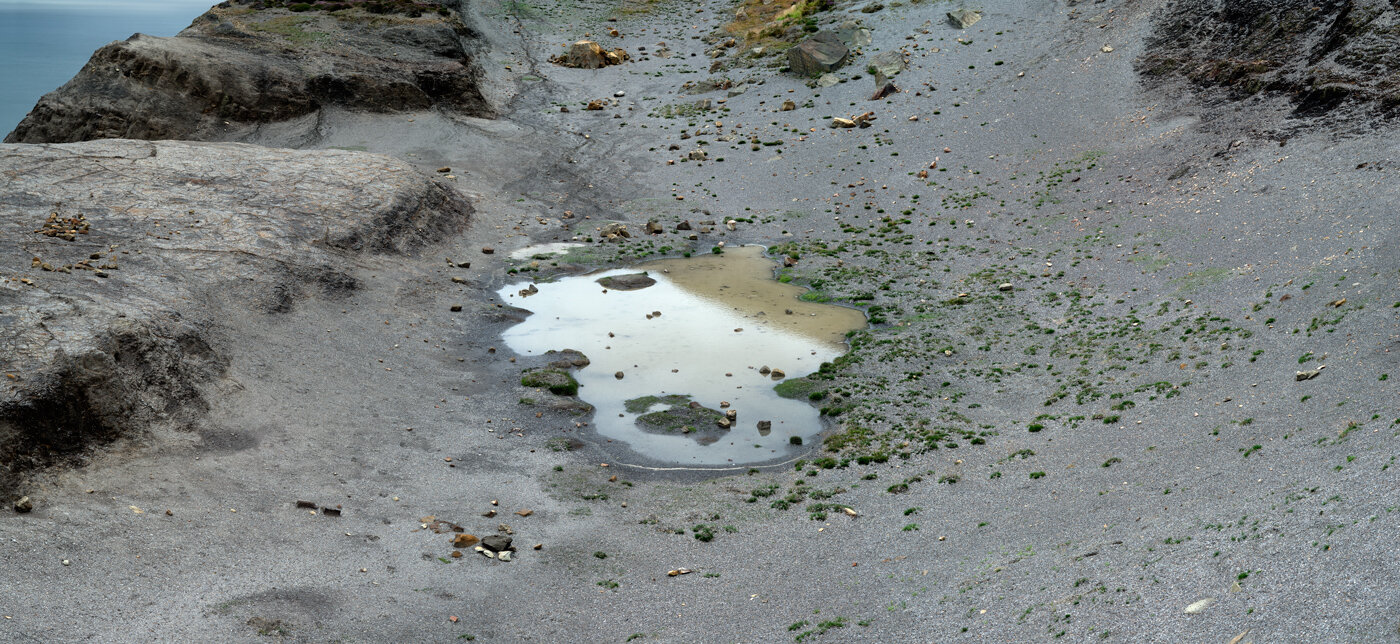
Alum Scars, North Yorkshire Coast. Work in progress.
From the 16th-century alum was essential in the textile industry as a fixative for dyes. Alum was extracted from quarried shales and then burnt in huge piles for 9 months, before transferring it to leaching pits to extract aluminium sulphate liquor. Human urine was then added. At its peak of alum production required 200 tonnes of urine every year, and was imported from London and Newcastle. The last Alum works on the Yorkshire Coast closed in 1871.
Alum #1, 2019. 44” x 65” pigment inkjet print

Alum #2, 2019
44" x 60" pigment inkjet print

Alum #8, 2020
44" x 57" pigment inkjet print

Alum #3, 2019
30" x 58" pigment inkjet print

Alum #4, 2019
30" x 58" pigment inkjet print

Alum #10, 2020
30" x 65" pigment inkjet print

Alum #11, 2020
30" x 58.5" pigment inkjet print







Alum Scars, North Yorkshire Coast. Work in progress.
From the 16th-century alum was essential in the textile industry as a fixative for dyes. Alum was extracted from quarried shales and then burnt in huge piles for 9 months, before transferring it to leaching pits to extract aluminium sulphate liquor. Human urine was then added. At its peak of alum production required 200 tonnes of urine every year, and was imported from London and Newcastle. The last Alum works on the Yorkshire Coast closed in 1871.
Alum #1, 2019. 44” x 65” pigment inkjet print
Alum #2, 2019
44" x 60" pigment inkjet print
Alum #8, 2020
44" x 57" pigment inkjet print
Alum #3, 2019
30" x 58" pigment inkjet print
Alum #4, 2019
30" x 58" pigment inkjet print
Alum #10, 2020
30" x 65" pigment inkjet print
Alum #11, 2020
30" x 58.5" pigment inkjet print